In the fascinating world of herpetology, survival often depends on clever adaptations rather than strength alone. Among these remarkable survival strategies, mimicry stands out as one of nature’s most ingenious defensive mechanisms. Non-venomous snakes, lacking the potent chemical weapons of their venomous counterparts, have evolved to mimic the appearance, behavior, and even sounds of more dangerous species. This form of deception serves as a powerful deterrent against potential predators who would rather avoid a potentially deadly encounter. From vibrant color patterns to specialized defensive postures, these eight non-venomous snake species demonstrate how evolution has crafted sophisticated illusions that help harmless creatures survive in a world full of threats.
The Eastern Milk Snake: Royal Impostor
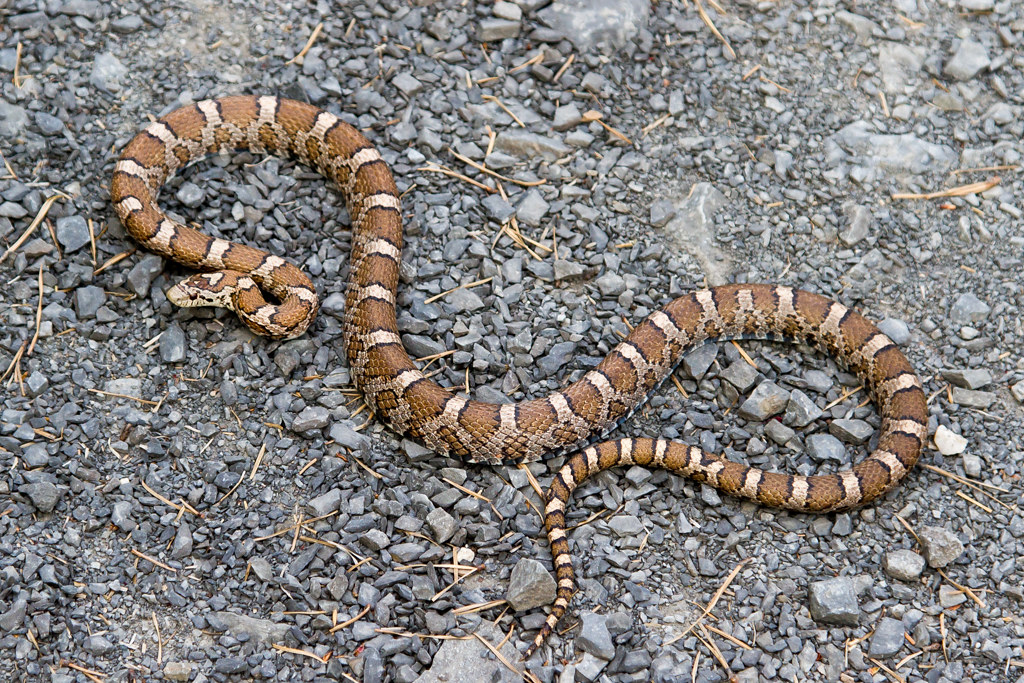
The Eastern Milk Snake (Lampropeltis triangulum) presents one of the most classic examples of Batesian mimicry in North American serpents. With its vibrant pattern of red, black, and yellow/white bands, this harmless snake bears a striking resemblance to the venomous coral snake, leading to the old rhyme “red touch yellow, kill a fellow; red touch black, friend of Jack” to help people distinguish between them. This mimicry is so effective that many Eastern Milk Snakes are needlessly killed by humans who mistake them for their dangerous lookalikes. Found throughout eastern North America, milk snakes further enhance their defensive display by vibrating their tails against dry leaves to mimic a rattlesnake’s warning sound when threatened. Their deception extends to behavior as well, as they may flatten their heads into a triangular shape reminiscent of venomous vipers when confronted by potential threats.
The Scarlet Kingsnake: Perfect Coral Snake Mimic
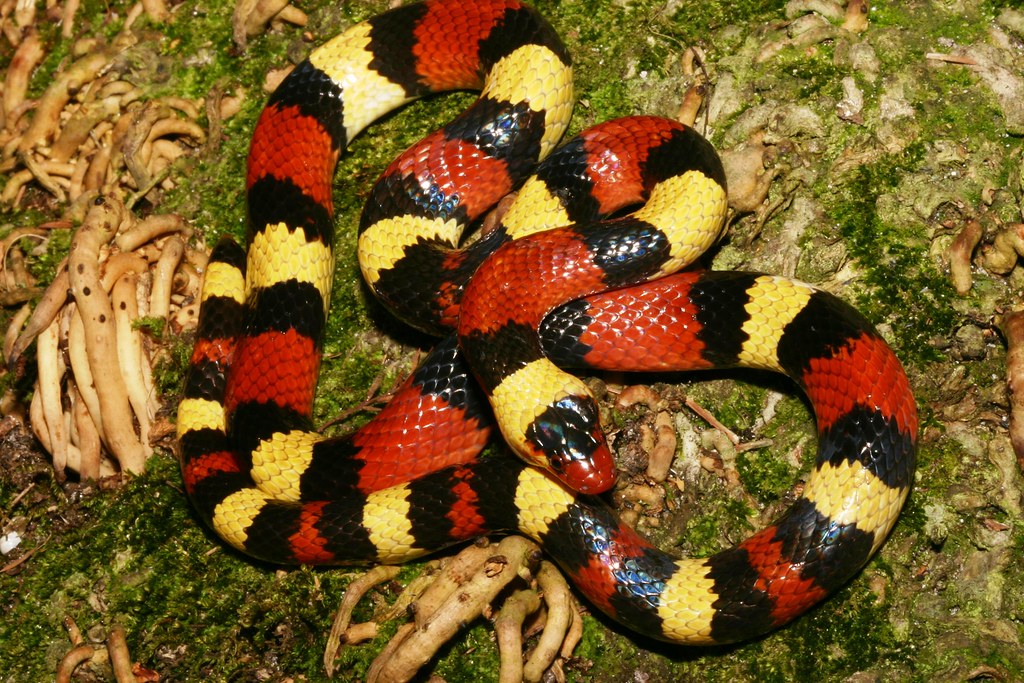
The Scarlet Kingsnake (Lampropeltis elapsoides) represents perhaps the most perfect mimic of the venomous Eastern Coral Snake found in the southeastern United States. Featuring the classic red, black, and yellow banding pattern, this small constricator has evolved coloration remarkably similar to its deadly model, though with a critical difference in band arrangement. While coral snakes have adjacent red and yellow bands (“red touch yellow, kill a fellow”), the kingsnake’s red bands touch black instead.
Research has shown that in areas where coral snakes are common, scarlet kingsnakes have evolved more precise mimicry than in regions where coral snakes are absent, demonstrating the evolutionary advantage of this deception. When threatened, scarlet kingsnakes may hide their heads and elevate their tails, showing off their bright warning coloration while concealing the head pattern that might give away their harmless identity to knowledgeable predators. This sophisticated mimicry benefits the kingsnake by deterring predators who have evolved to avoid the genuinely dangerous coral snake.
The False Water Cobra: Hooded Bluffer
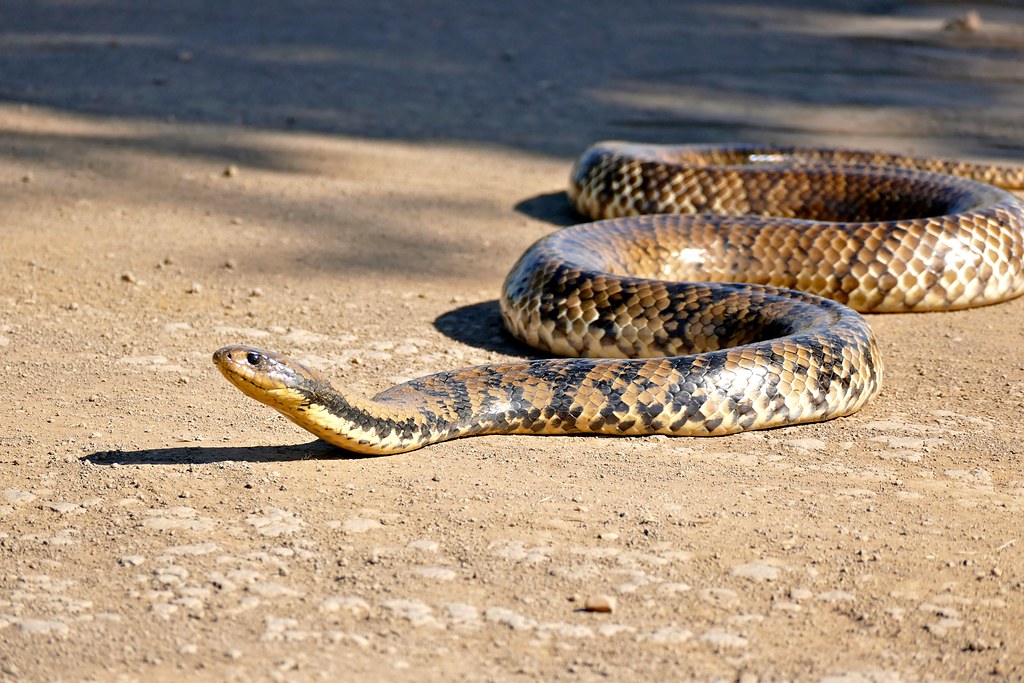
The False Water Cobra (Hydrodynastes gigas) from South America employs a remarkable form of behavioral mimicry that can startle even experienced herpetologists. When threatened, this non-venomous snake flattens its neck to create a hood reminiscent of true cobras, creating an intimidating display that suggests venomous capabilities it doesn’t possess. Though lacking deadly venom, the False Water Cobra does have enlarged rear fangs and mildly toxic saliva that can cause local swelling if bitten – a secondary defense system that backs up its bluff.
Growing up to 8 feet long, these impressive snakes combine their cobra-like display with aggressive forward strikes and loud hissing, completing an intimidation package that effectively deters many potential predators. Their common name reflects both their semi-aquatic habitat preferences and their masterful imitation of one of the animal kingdom’s most feared predators, demonstrating how behavioral mimicry can be just as effective as color pattern mimicry.
The Shovel-nosed Snake: Desert Coral Mimic
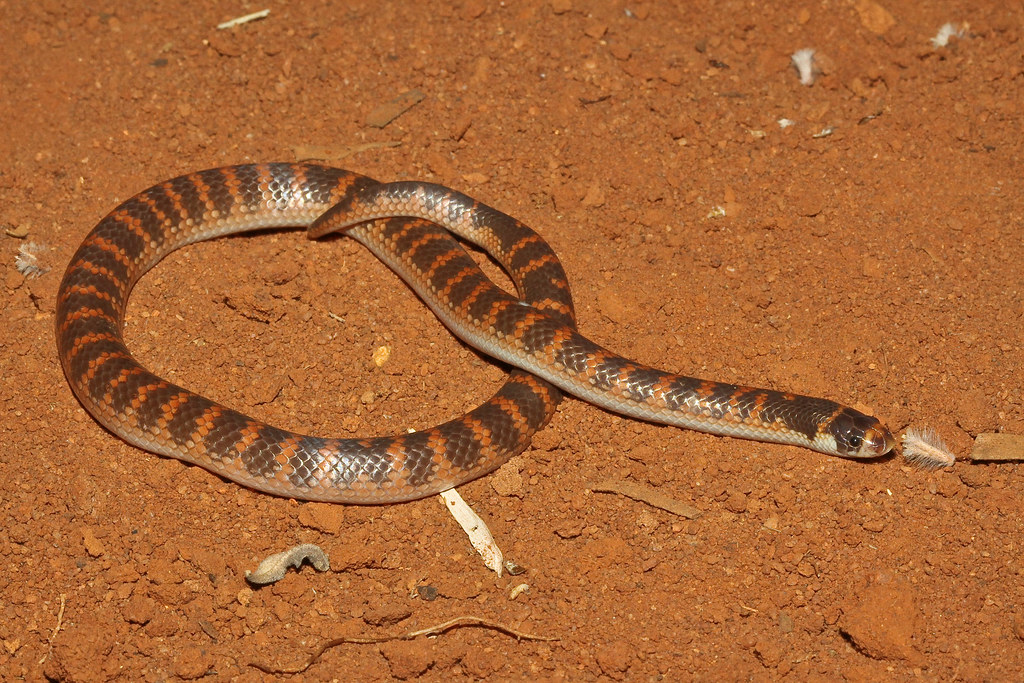
The Western Shovel-nosed Snake (Chionactis occipitalis) demonstrates how mimicry can evolve in specific geographic regions to match local venomous species. This small desert-dweller of the southwestern United States sports red and black banding on a cream background, bearing a resemblance to the Arizona Coral Snake that shares its arid habitat. Unlike many mimics that rely solely on visual deception, the Shovel-nosed Snake has evolved specialized physical adaptations that support its desert lifestyle, including a distinctive shovel-shaped snout that allows it to “swim” through loose sand with remarkable efficiency.
When threatened, these snakes may flatten their bodies to display their warning coloration more prominently or even perform a unique defensive behavior where they roll onto their backs, exposing their brightly colored underside while writhing in an erratic manner. This distinctive behavioral display combines with their coral snake-like appearance to create a multi-layered defensive strategy against the numerous predators that roam their desert habitat.
The Mud Snake: Underwater Coral Mimic
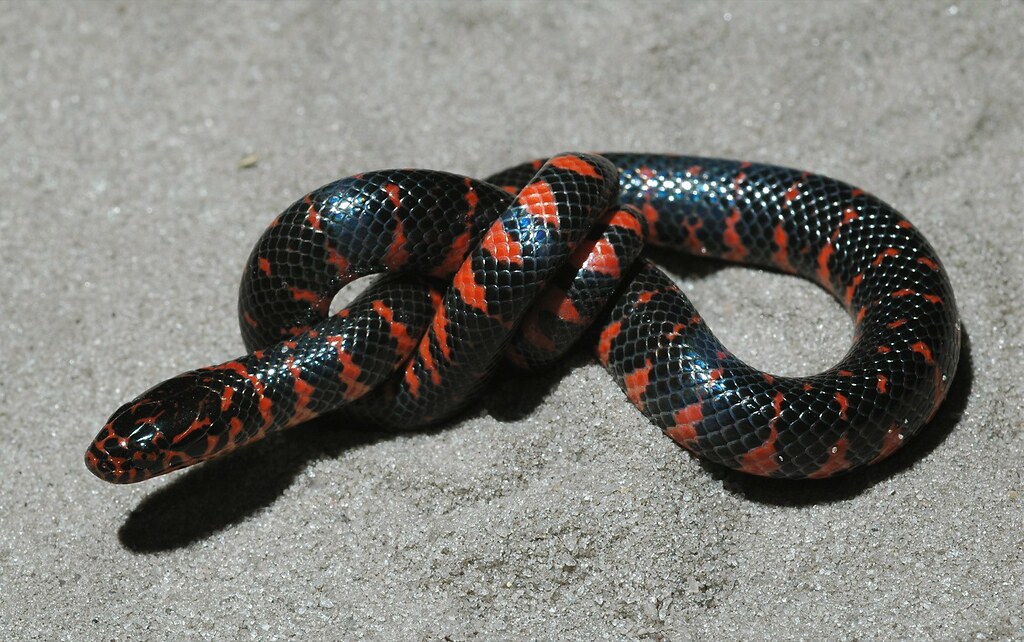
The Eastern Mud Snake (Farancia abacura) presents a fascinating example of mimicry adapted to semi-aquatic environments in the southeastern United States. With a glossy black dorsal surface and striking red or pink checkerboard pattern on its belly, this non-venomous species bears a resemblance to the venomous Eastern Coral Snake when viewed from below in its freshwater habitats.
What makes the Mud Snake’s mimicry particularly interesting is that it’s primarily visible from underneath – suggesting it evolved specifically to deter predators that might attack from below while the snake swims or rests in shallow water. These secretive snakes spend much of their time in muddy bottoms of swamps and streams, hunting for their favorite prey: aquatic salamanders that they swallow whole. When handled, Mud Snakes rarely bite but may perform an unusual defensive display where they curl their tails, exposing the bright ventral coloration while pressing the pointed tail tip against a predator – a harmless probe often mistaken for a sting by superstitious observers.
The Sonoran Shovel-nosed Snake: Banded Deceiver
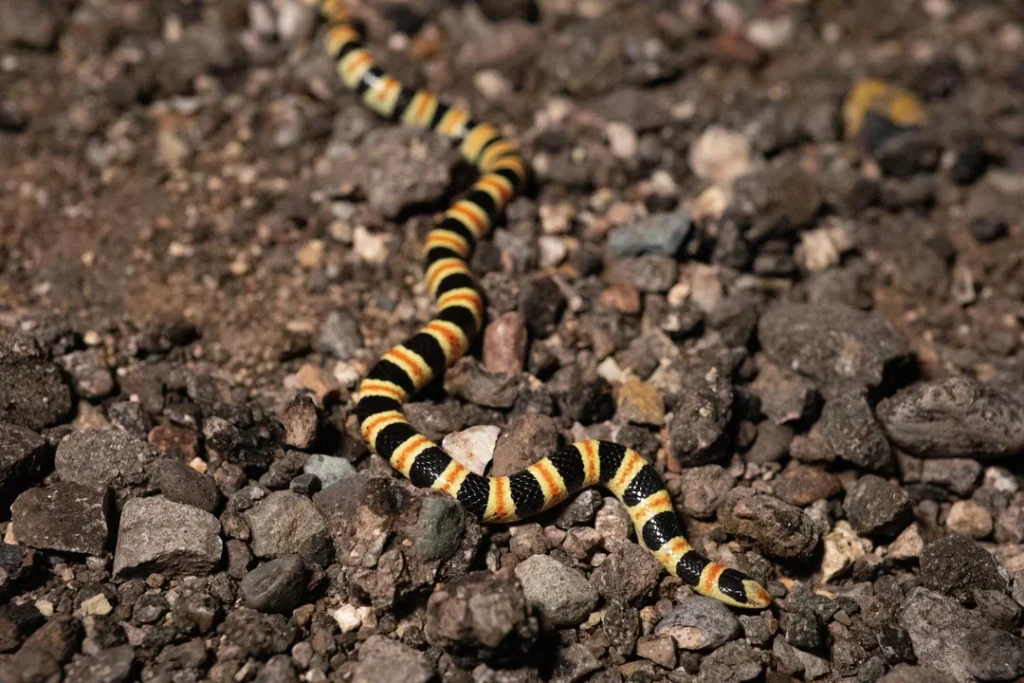
The Sonoran Shovel-nosed Snake (Chionactis palarostris) represents another remarkable example of coral snake mimicry adapted to desert environments. Native to the Sonoran Desert regions of Arizona and Mexico, this small snake displays bold alternating bands of black and red or orange on a cream background, creating an effective imitation of the Sonoran Coral Snake that shares its habitat. Like its close relative the Western Shovel-nosed Snake, this species possesses a specialized snout adapted for “sand swimming,” allowing it to move beneath the desert surface with minimal resistance.
When confronted by predators, the Sonoran Shovel-nosed Snake may engage in a behavior called “fake striking,” where it lunges forward with closed mouth – a bluffing behavior that enhances its venomous appearance without actually putting itself at risk through contact. Scientists have documented that in areas where coral snakes are more common, these mimics tend to display more vivid and accurate banding patterns, providing compelling evidence for the evolutionary advantages of this form of Batesian mimicry.
The Long-nosed Snake: Tricolor Trickster
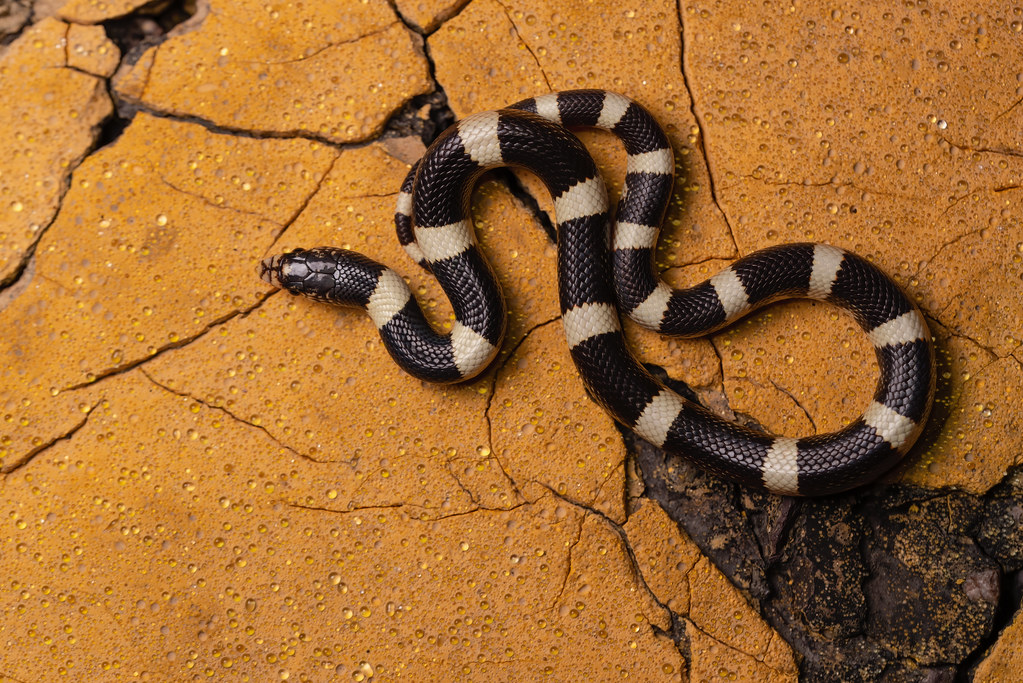
The Long-nosed Snake (Rhinocheilus lecontei) employs a fascinating variation of coral snake mimicry across its range in the western United States and Mexico. Featuring a variable pattern of black, red, and cream/white bands or blotches, these snakes bear a general resemblance to coral snakes but with less precise pattern matching than some other mimics. What makes the Long-nosed Snake particularly interesting is that the intensity of its mimicry varies geographically – populations in areas where coral snakes are present tend to display more distinct banding patterns than those in regions where coral snakes are absent.
When threatened, these nocturnal hunters may perform a distinctive defensive display where they coil tightly, hide their heads, and expose their posterior regions while making jerky movements – effectively drawing attention to their coral snake-like coloration. Additionally, they possess a specialized defensive adaptation where their scales can freely release from the skin when grabbed, allowing them to escape while leaving a predator holding nothing but detached scales – a strategy that complements their mimicry with a practical escape mechanism.
The Ringneck Snake: Unexpected Flash Display
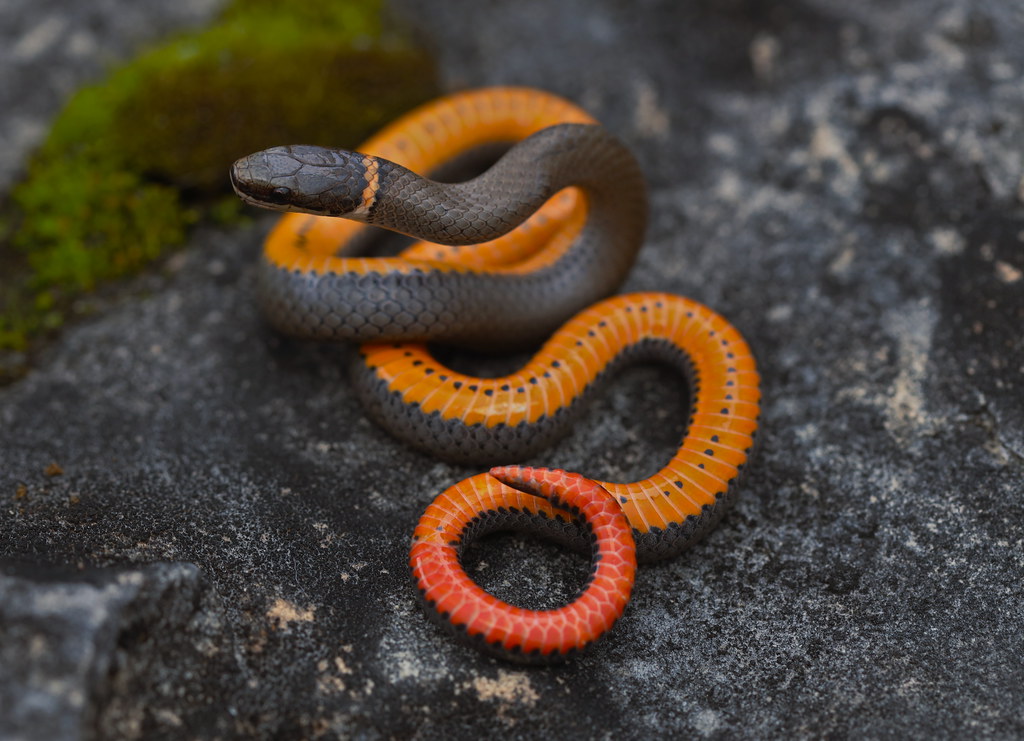
The Ringneck Snake (Diadophis punctatus) employs a unique form of defensive mimicry that differs from the coral snake imitations of many other species. These small, secretive snakes feature a dark dorsal surface with a distinctive bright yellow, orange, or red ring around the neck, while their undersides display vibrant yellow or orange coloration. When threatened, Ringneck Snakes employ a specialized defensive behavior where they curl their tails into a tight spiral, exposing the brightly colored underside in a distinctive display that resembles the warning postures of certain venomous species.
The Ringneck’s defense strategy represents what scientists call “flash coloration” – where normally hidden bright colors are suddenly revealed to startle predators. This small snake, rarely exceeding 15 inches in length, enhances its display by secreting a foul-smelling musk from glands near the base of its tail, creating a multi-sensory defensive strategy that compensates for its lack of significant venom. Though they do possess mild venom delivered through rear fangs, it’s effective only against their small prey like salamanders and earthworms, making their mimicry essential for deterring larger threats.
How Mimicry Evolves in Snake Populations
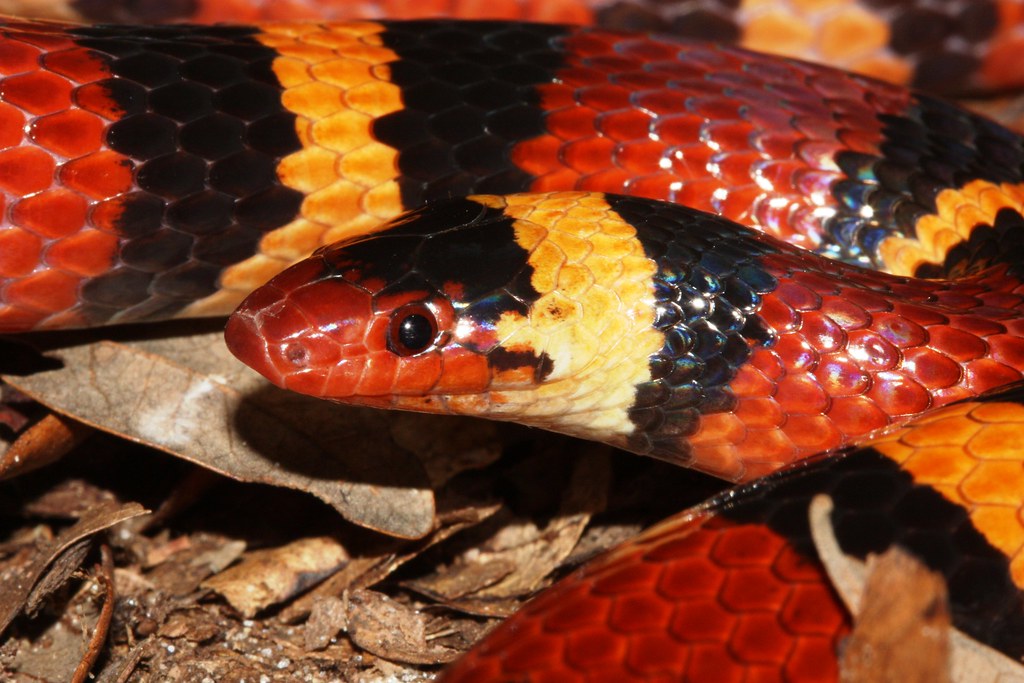
The evolution of mimicry in snakes represents one of nature’s most compelling examples of natural selection in action. This process begins when random genetic variations produce individuals with slight resemblances to venomous species, conferring even a small survival advantage that allows these traits to be passed to offspring. Over many generations, individuals with more accurate mimicry gain greater protection from predators, leading to the refinement of these traits through what biologists call “directional selection.”
Research has demonstrated that mimicry is often most accurate in regions where the model (venomous species) and mimic (non-venomous species) coexist, and may become less precise in areas where the dangerous model is absent – a phenomenon known as character displacement. The development of these remarkable resemblances represents an evolutionary arms race, where prey species continuously evolve better mimicry while predators evolve better discrimination abilities. The diverse mimicry strategies employed by non-venomous snakes illustrate the multiple evolutionary pathways that can lead to similar protective outcomes.
Batesian vs. Müllerian Mimicry in Snakes
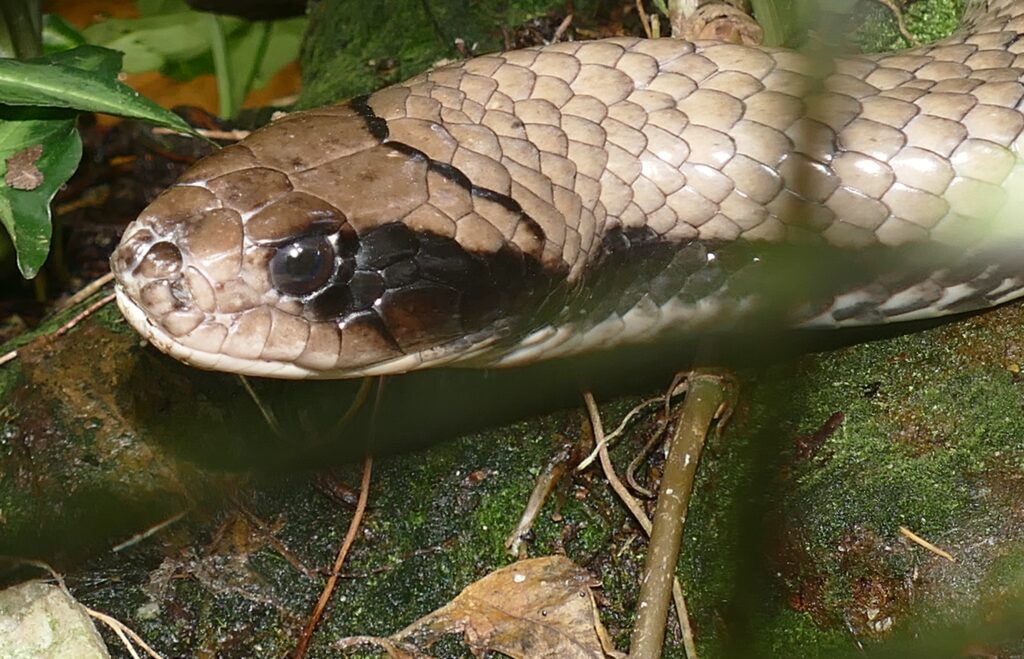
The snake world exhibits two principal forms of mimicry, each representing different evolutionary relationships between species. Batesian mimicry, the more common form observed in non-venomous snakes, occurs when a harmless species evolves to resemble a dangerous one – essentially gaining protection by falsely advertising defensive capabilities it doesn’t possess.
Müllerian mimicry, by contrast, develops when multiple dangerous species evolve to resemble each other, creating a shared warning pattern that predators learn to avoid more efficiently through multiple negative encounters. While most examples in this article represent Batesian mimicry, some mildly venomous rear-fanged colubrid snakes may participate in Müllerian mimicry complexes with more dangerous elapids like coral snakes.
The effectiveness of Batesian mimicry depends on the relative abundance of models and mimics; if harmless mimics become too common, predators may not encounter enough dangerous models to maintain the association between the warning pattern and genuine threat. This delicate balance explains why perfect mimics are often less common than their models, representing an evolutionary equilibrium that maintains the deception’s effectiveness.
The Limitations and Risks of Mimicry
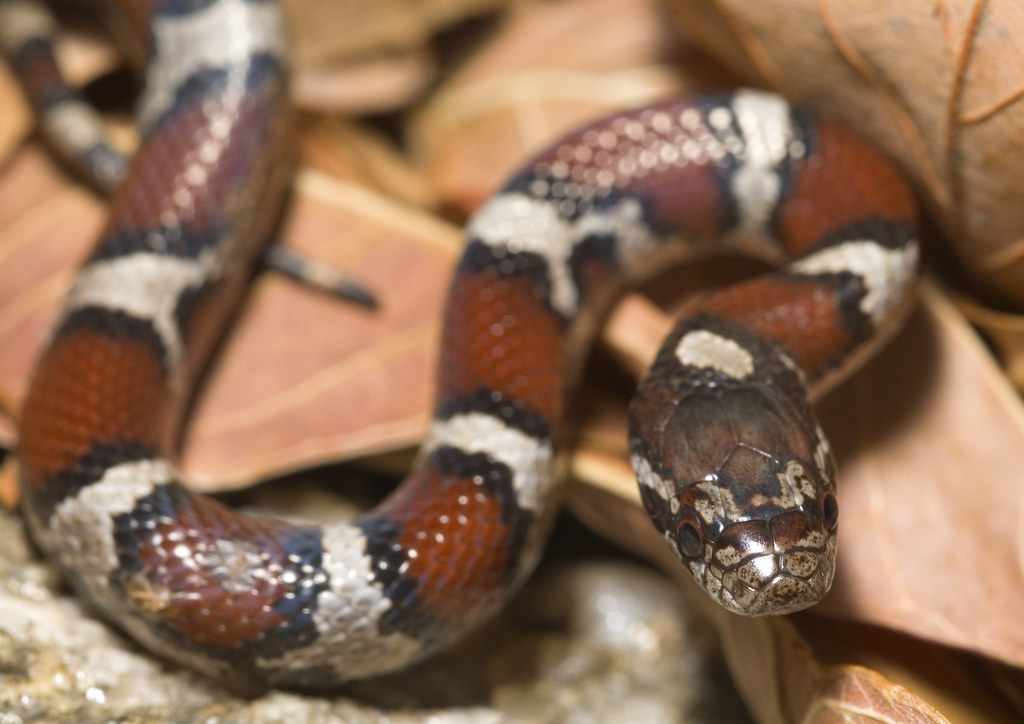
While mimicry provides substantial protective benefits for non-venomous snakes, this survival strategy comes with significant limitations and inherent risks. Perhaps the most obvious drawback is that mimicry only works against predators that have the ability to recognize and remember warning signals – it offers no protection against threats that cannot perceive the mimicry or have not learned to avoid the dangerous model. Additionally, the effectiveness of Batesian mimicry depends on the continued presence of the venomous model in the ecosystem; if the dangerous species declines or disappears, predators may gradually lose their aversion to the warning patterns.
For many mimics, the very coloration that protects them from knowledgeable predators may actually increase their visibility to naïve ones, potentially making them more conspicuous targets. Perhaps most ironically, convincing mimics face increased risk from humans who mistake them for venomous species – countless harmless kingsnakes and milk snakes are killed each year because of their resemblance to coral snakes, a tragic consequence of their otherwise beneficial deception.
Conservation Challenges for Mimetic Snake Species
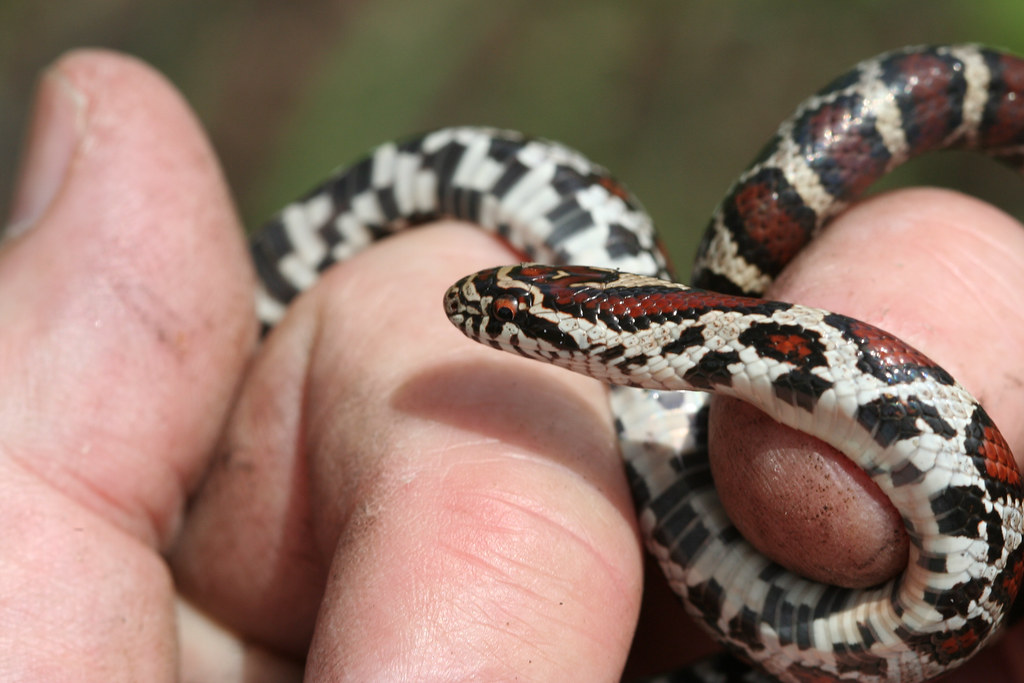
The intricate evolutionary relationship between mimics and their models creates unique conservation challenges for these remarkable snakes. Many mimetic species face threats from habitat destruction, climate change, and direct persecution based on their resemblance to dangerous species. The conservation of mimics is inherently linked to the preservation of their models; if venomous species decline in certain regions, the protective advantage of mimicry may diminish over time, potentially leaving mimics more vulnerable to predation.
Road mortality disproportionately affects many brightly colored mimics, as their bold patterns make them both more visible to drivers and more likely to be intentionally run over by those mistaking them for venomous species. Educational outreach remains vital for the protection of these species, as teaching people to appreciate rather than fear snakes – and to accurately distinguish between harmless mimics and venomous models – can reduce intentional killings. Conservation efforts must consider these complex ecological relationships, working to preserve not just individual species but the evolutionary dynamics that have produced such remarkable adaptations.
Mimicry Beyond Appearance: Behavioral Deception
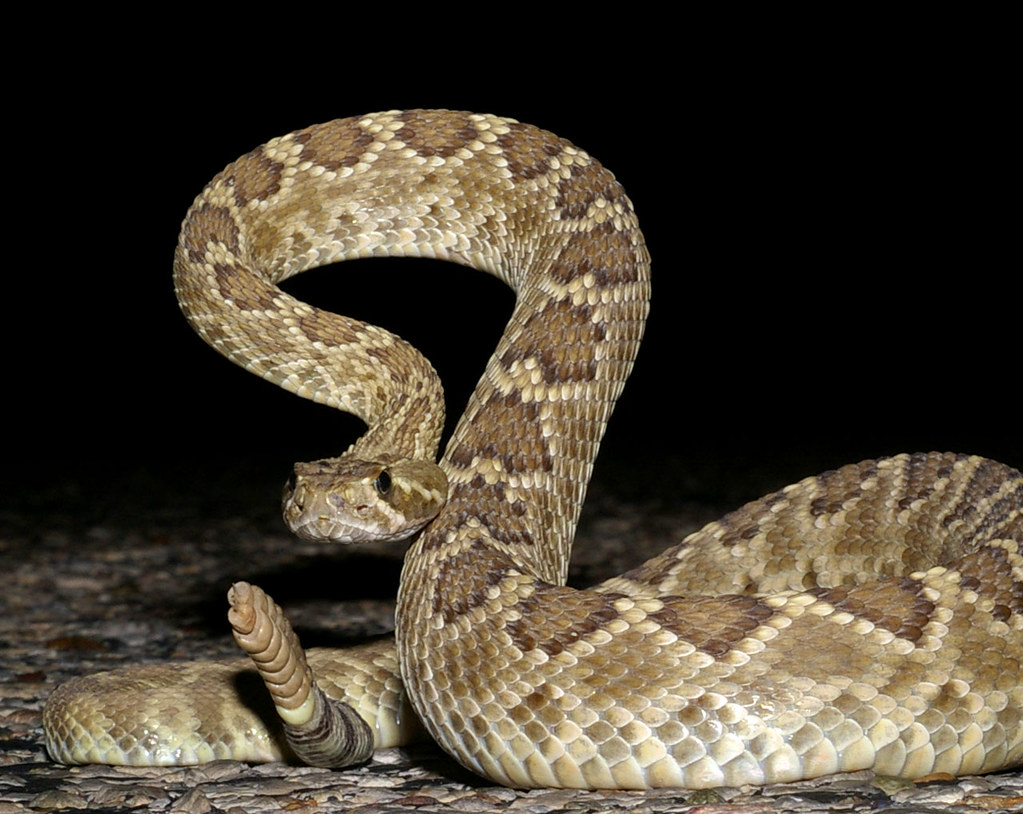
While color pattern mimicry receives the most attention, many non-venomous snakes have evolved sophisticated behavioral mimicry that enhances their deceptive displays. When threatened, numerous harmless species will flatten their heads into a triangular shape reminiscent of venomous vipers, creating a more convincing impression of danger. Tail vibration represents another common form of behavioral mimicry, where non-venomous snakes rapidly shake their tails against leaf litter to produce a sound similar to a rattlesnake’s warning – a behavior observed in everything from rat snakes to king snakes.
Some species combine multiple forms of behavioral deception, such as the hognose snake’s elaborate defensive routine that includes hooding like a cobra, hissing loudly, striking with closed mouth, and ultimately playing dead with tongue extended if the threat persists. These behavioral adaptations often work in concert with physical mimicry to create more convincing deceptions, demonstrating how natural selection has refined these defensive strategies across multiple dimensions. The integration of visual, auditory, and behavioral mimicry creates defense systems greater than the sum of their parts, maximizing a harmless snake’s chances of deterring predators without actual combat.
In the complex theater of nature, mimicry stands as one of evolution’s most sophisticated adaptations – a living testament to the power of natural selection. The eight non-venomous snake species explored here represent just a sampling of the remarkable deceptive strategies that have evolved independently across different snake families and geographic regions. From the perfect coral snake imitation of the Scarlet Kingsnake to the behavioral deception of the False Water Cobra, these harmless serpents demonstrate how the illusion of danger can be just as effective as actual venom for survival. Their existence depends on a delicate ecological balance where predators continue to encounter enough genuinely dangerous models to maintain respect for the warning signals. As we work to conserve these fascinating creatures and their habitats, we preserve not just the species themselves but the evolutionary relationships that have produced such remarkable adaptations – living examples of natural selection that continue to shape life on our planet through the endless dance of predator and prey.


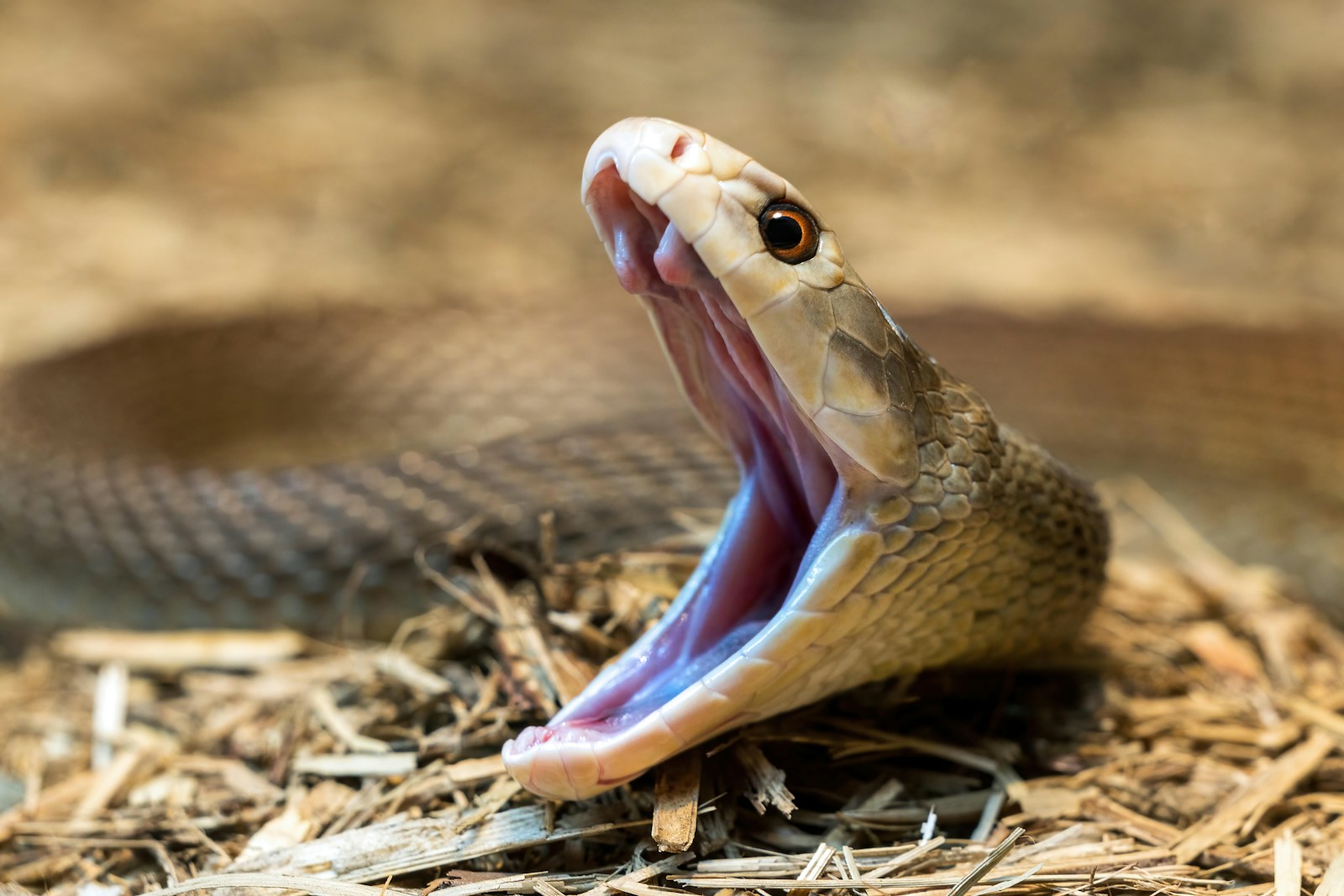
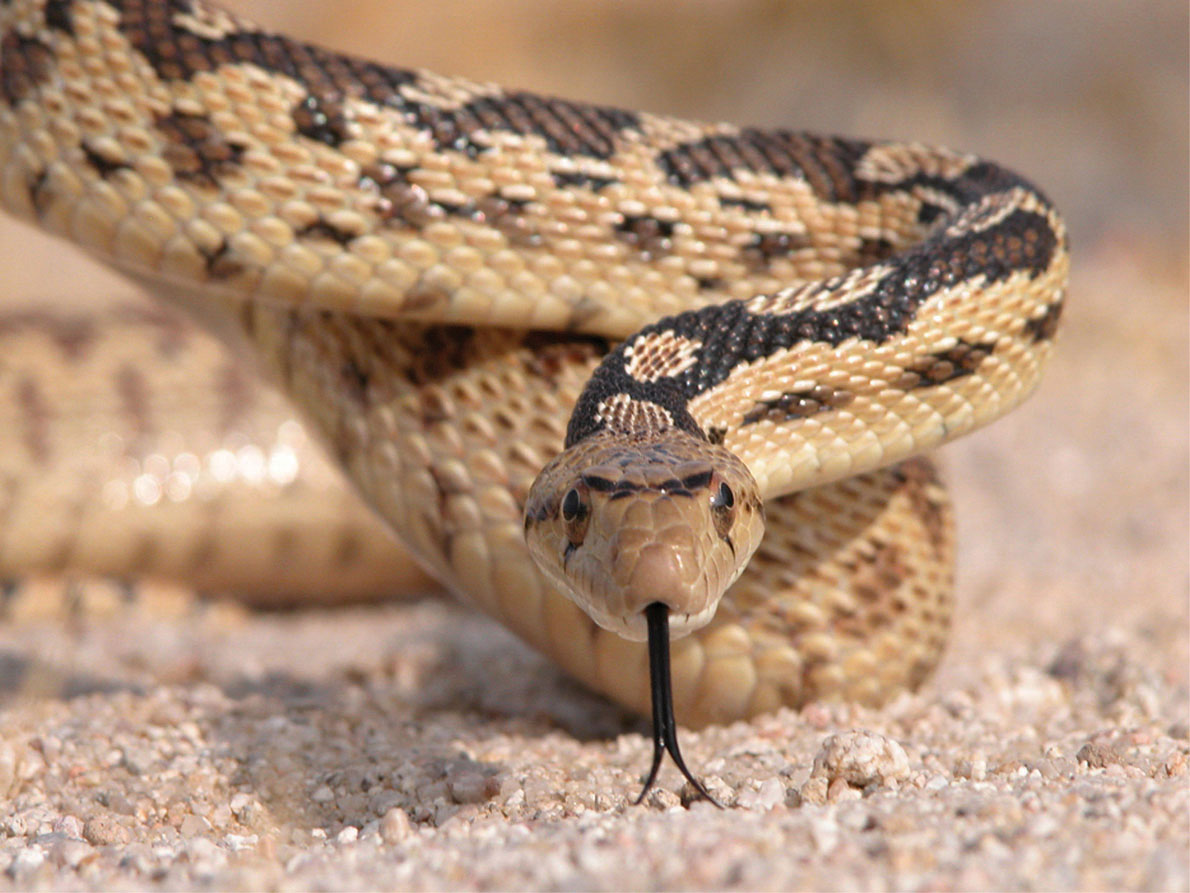
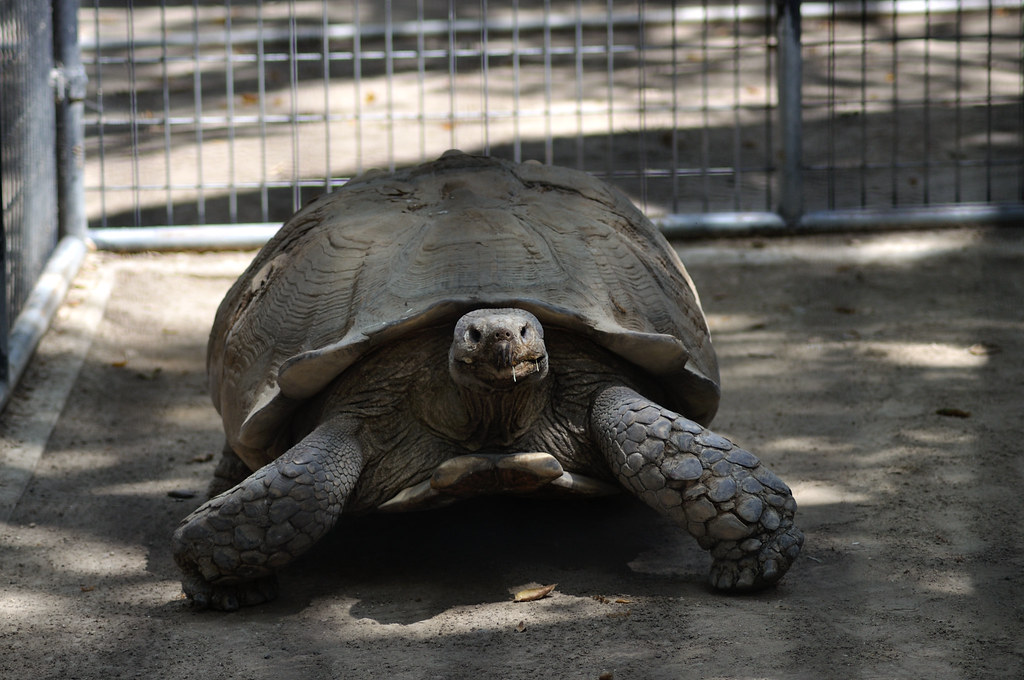
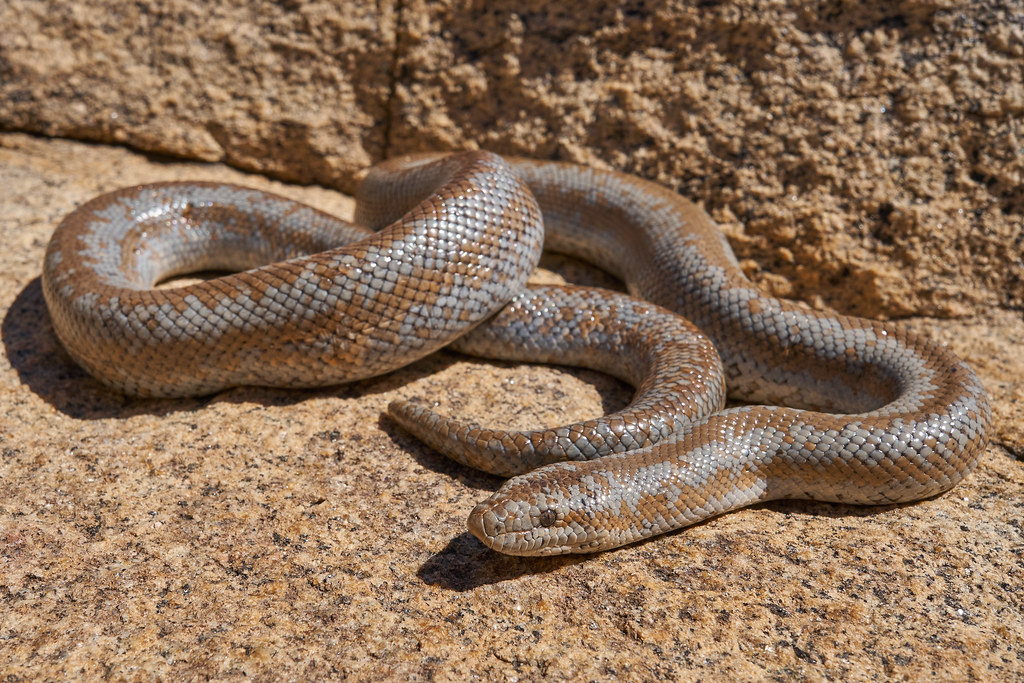
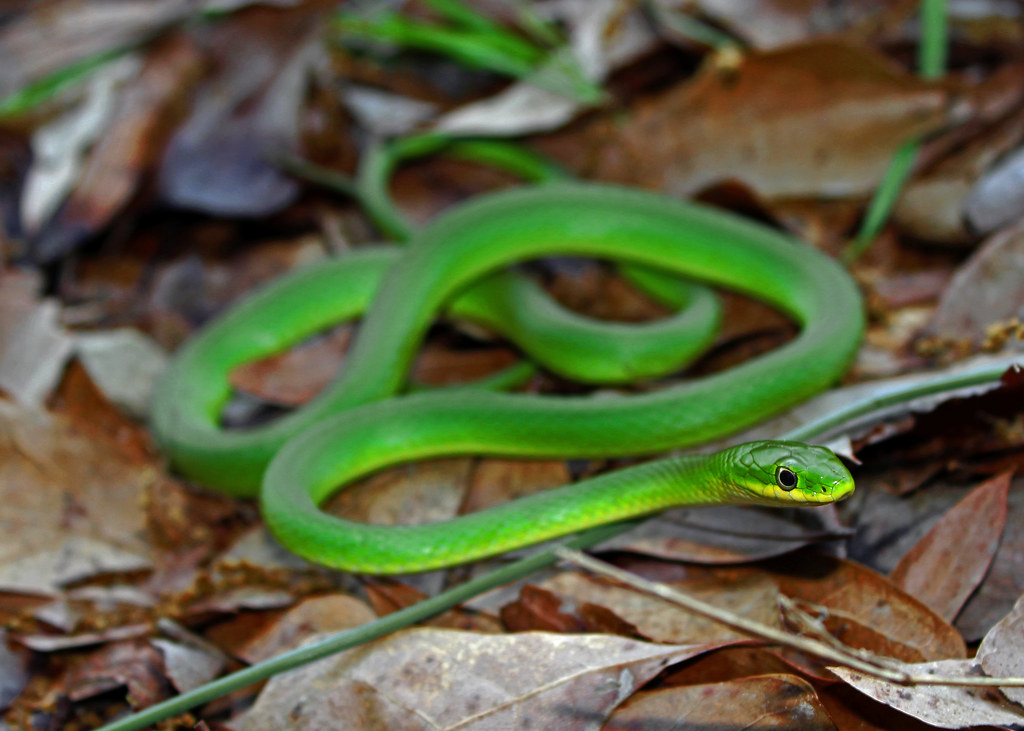
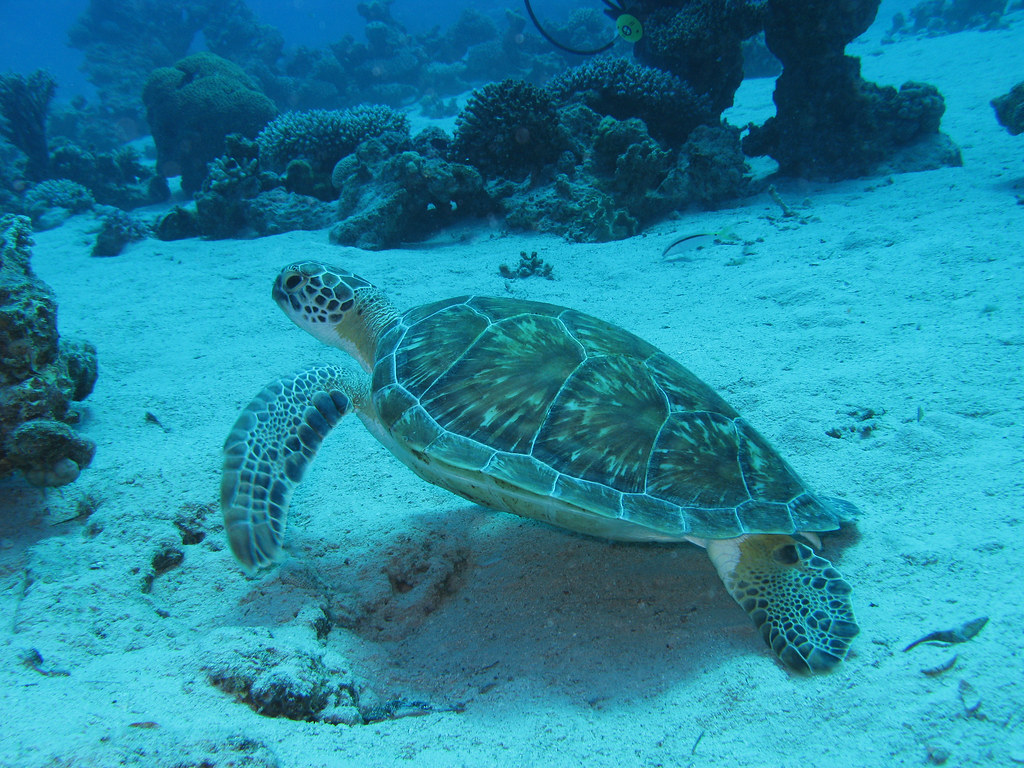
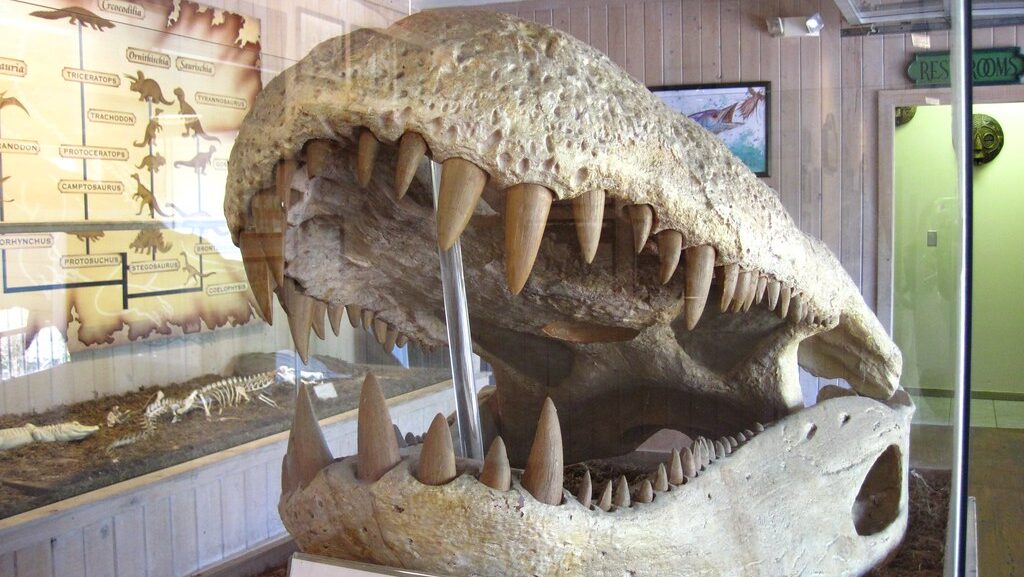
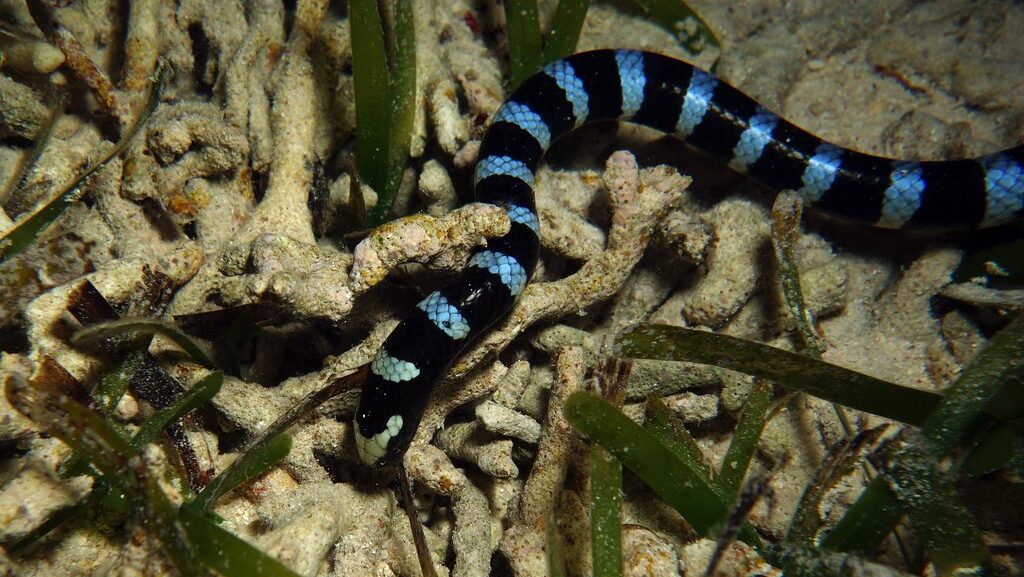
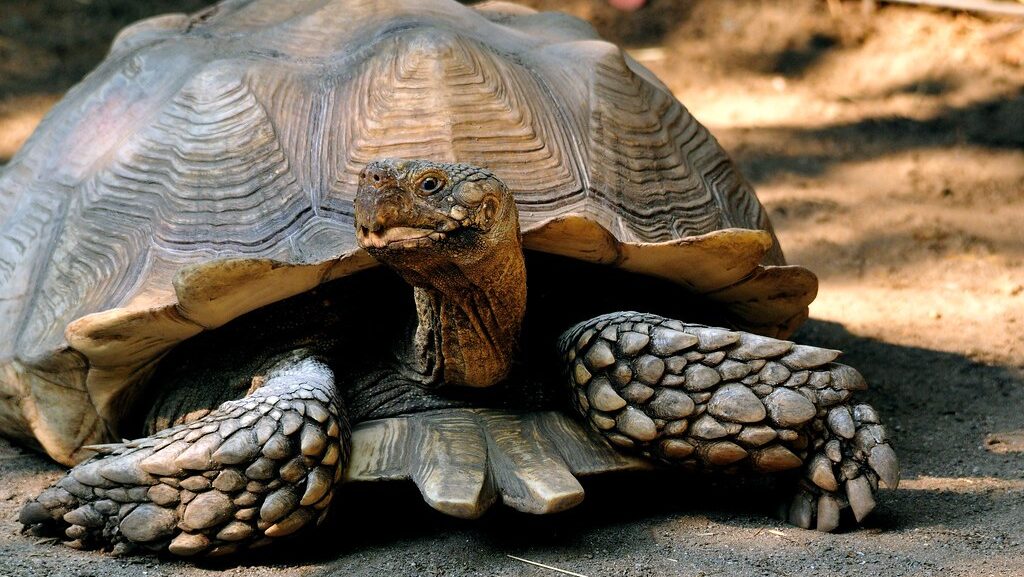



Leave a Reply